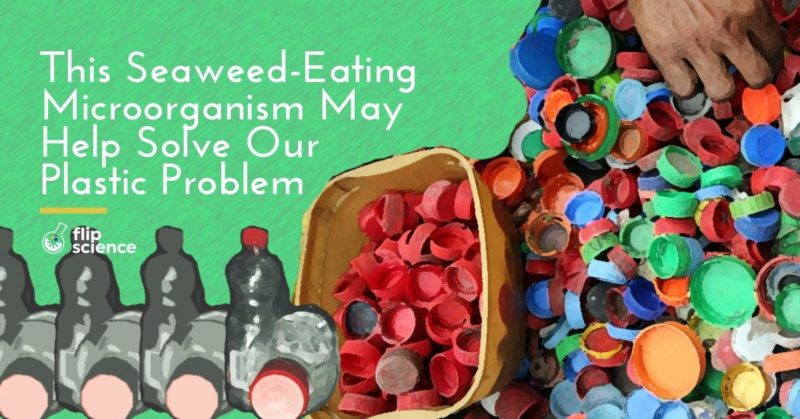• Researchers from Tel Aviv University have discovered a sustainable alternative to plastic: a non-toxic bioplastic polymer.
• Polyhydroxyalkanoate (PHA) comes from a marine microorganism that feeds on seaweed, and does not require fresh water or fertile soil to produce.
• The researchers believe that this innovation can help facilitate a smoother transition to biodegradable plastics.
Plastic waste comprises around 90 percent of ocean pollutants, according to the United Nations. Not that humanity hasn’t been doing (or at least trying to do) something about it: we’ve devoted decades of research to finding environment-friendly, financially sustainable alternatives to plastic.
Through the years, experts have developed and proposed a number of solutions, from reusable bags to intensive recycling campaigns. A recently published study in Bioresource Technology is particularly promising: A non-toxic bioplastic substance that recycles into organic waste and does not require a ton of resources to produce.
The secret’s in the seaweed
As study author Dr. Alexander Golberg of the Porter School of Environmental and Earth Sciences at Tel Aviv University (TAU) explains: “Plastics take hundreds of years to decay. So bottles, packaging and bags create plastic ‘continents’ in the oceans, endanger animals and pollute the environment. Plastic is also produced from petroleum products, which has an industrial process that releases chemical contaminants as a byproduct.”
Dr. Goldberg and study co-author Prof. Michael Gozin of TAU’s School of Chemistry revealed that a polymer called polyhydroxyalkanoate (PHA) can be used to produce an environment-friendly plastic substitute. This polymer comes from a type of marine microorganism called Haloferax mediterranei, which feeds on seaweed.
While some bioplastic alternatives already exist, cultivating the plants or bacteria they’re made from requires both fresh water and fertile soil. Thus, this is a problem in countries like China, India, and Israel, where such resources are scant.
The researchers believe that their findings will make the switch from petroleum-derived plastics to biodegradable plastics easier, even in countries with a limited supply of fresh water.
“Our raw material was multicellular seaweed, cultivated in the sea,” said Dr. Golberg. “These algae were eaten by single-celled microorganisms, which also grow in very salty water and produce a polymer that can be used to make bioplastic.”
The next step in their research? Finding other bacteria and algae ideal for producing bioplastic polymers with various characteristics.
Plastic pollution in the Philippines
In 2015, the Philippines was the world’s third largest source of discarded plastic ocean pollutants, after China and Indonesia.
The country produces approximately 2.7 million tons of plastic waste per year. About 540,000 tons of it end up in the ocean. In a nation that is frequently buffeted by storms, this is a particularly pressing problem. The trash ends up clogging waterways, worsening the impact of rainfall and natural disasters.
Republic Act 9003 (or the Ecological Solid Waste Management Act of 2000) exists to remedy this problem. However, strict implementation of its directives has proven to be a challenge for local government units.
For now, until sustainable alternatives see wider use, Filipinos would do well to support recycling and garbage segregation initiatives.
Cover photo: Krizjohn Rosales, George Becker
References
- http://dx.doi.org/10.1016/j.biortech.2018.09.108
- http://thegreentimes.co.za/the-pros-and-cons-of-plastic-alternatives/
- https://academic.oup.com/femsle/article/364/10/fnx070/3101030
- https://phys.org/news/2018-12-sustainable-plastics-horizon.html
- https://www.philstar.com/headlines/2018/06/15/1824813/philippines-3rd-largest-contributor-ocean-plastic
- https://www.scmp.com/lifestyle/health/article/2168819/philippines-plastic-pollution-why-so-much-waste-ends-oceans
- “Stemming the Tide: Land-based strategies for a plastic-free ocean.” Ocean Conservancy and the McKinsey Centre for Business and Environment.
Author: Mikael Angelo Francisco
Bitten by the science writing bug, Mikael has years of writing and editorial experience under his belt. As the editor-in-chief of FlipScience, Mikael has sworn to help make science more fun and interesting for geeky readers and casual audiences alike.







